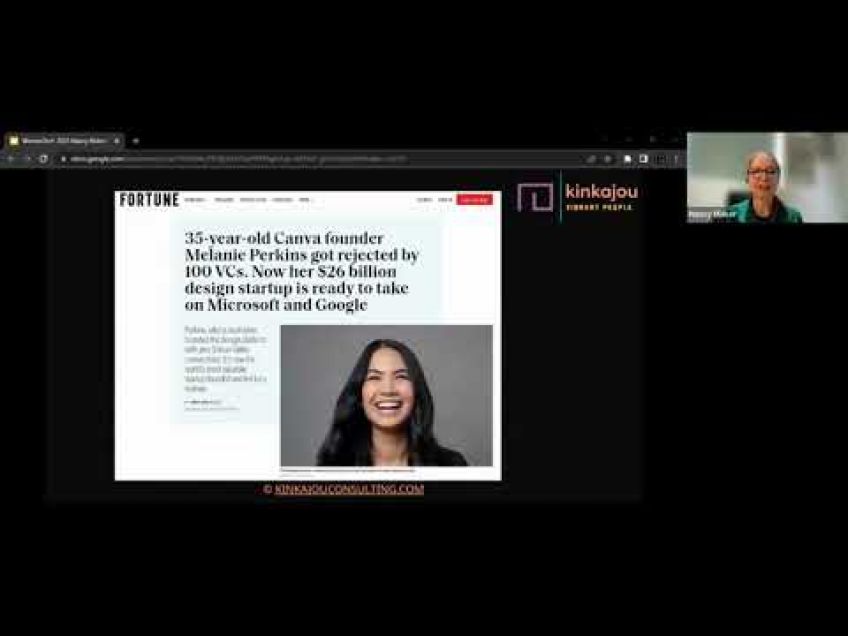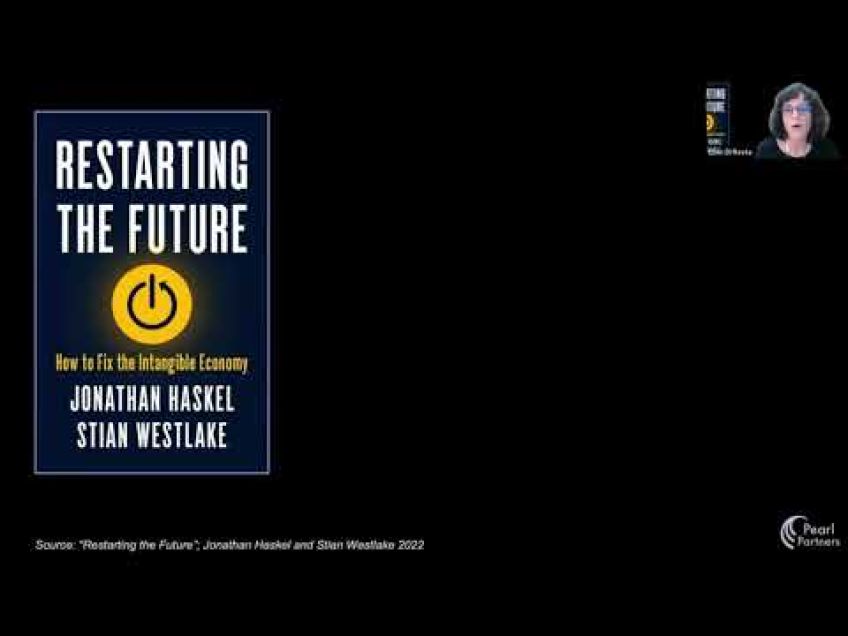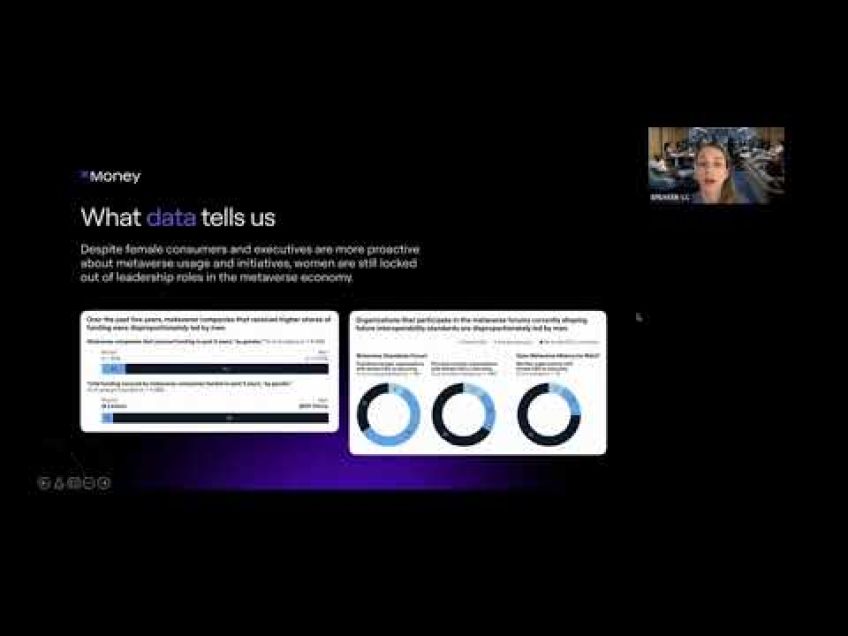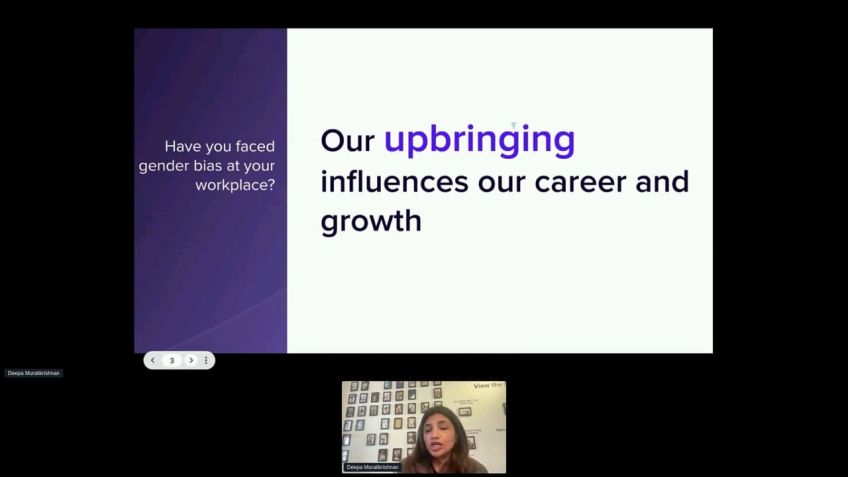Closing the Gender Gap in Tech by Albane Bressolle-Chataigner
Strategies to Bridge the Gender Gap in Tech World: Insights from Alban, Chief People Officer at Black Market
Alban, the Chief People Officer at Black Market, has been a player in the tech world for the past 15 years. His vast experience in startup and scale-up environments has provided him with valuable insights into the challenge of gender diversity in tech. In this article, he shares key strategies and initiatives to bridge this gap in tech companies.
Understanding the Gender Gap Context
Alban stresses that the gender gap and lack of diversity carry significant opportunity costs, especially for tech companies. Research supports that diverse teams including those with greater gender diversity, are more creative, innovative and tend to be more profitable. It becomes important for modern startups to dismantle the age-old stereotypes and to cultivate progressive, gender-balanced workplaces. Working towards such an environment requires intent, effort, trail and error.
Steps towards Creating an Inclusive Environment
1. Data Analysis to Understand the Present Scenario
Alban and his team began their approach to address the gender gap with a comprehensive analysis of quantitative and qualitative data. They studied gender ratios, breakdown by location, department levels, and also conducted company-wide surveys to understand the general feeling about their culture, diversity, and inclusion policies.
2. Setting Transparent and Measurable Goals
Black Market set clear goals and was transparent about them. In tune with their priority of accountability, they decided to raise the women intake in the company to 20% within a year, and subsequently to 30% in the following year.
3. Two-Pronged Approach: Attraction and Retention
To successfully bridge the gender gap, a simultaneous approach was required. The first step was to attract more female candidates and improve their gender ratio. Parallelly, they also worked on internal initiatives and policies to retain the women in their company, because recruiting is just half the battle.
Concrete Measures to Bridge the Gender Gap
Attracting More Women
There are three main methods to this strategy:
- Recruit in Unconventional Places: Alban states that companies should explore new avenues to recruit females in tech. Black Market successfully achieved this by partnering with organizations dedicated to empowering women in tech.
- Review the Recruitment Process: Refining job requirements and creating inclusive job listings can also attract more women candidates. Having a more structured interview process can also help to mitigate biases, making the whole process fairer.
- Create Role Models: Promoting female leaders in tech is another significant way to attract more women. Having women in authoritative positions reprsents the possibilities for growth and success in the company. It shows female candidates that they too, can achieve those positions.
Retention through Inclusion
Retaining women in tech also requires significant effort and key strategies include:
- Safety Policies: A safe work environment that supports women in decision-making and assures that their voices will be heard is vital.
- Structuring Policies: Ensuring transparent and fair HR policies is crucial for establishing an inclusive environment.
- Internal Education: It is important to equip the employees with knowledge about diversity, through training courses, workshops and more.
- Work-Life Integration: Alban emphasizes on fair work-life balance provisions and parental engagement policies to equalize opportunities among genders.
Conclusion: Inclusion is a Cultural Issue
The journey towards gender parity and inclusion involves everyone within an organization. Alban strongly emphasizes culture as the driving force for inclusion. The leadership team plays the essential role of role models for the behaviors that need to be promoted and for actions that are unacceptable. With clear rules and transparent efforts, every small step brings us closer to a diverse and inclusive tech world.
Video Transcription
Well, let's start. Uh I'm very happy to uh to be here.And uh and I hope uh this uh uh this session will uh will give you uh some uh tips and tricks on how to uh get better at uh a gender gap and especially uh in the tech world. Um Just to give you a little bit of insight on who am I? Uh So I Alban, I'm uh the Chief people officer uh at Black Market. And uh um I've been working in tech for uh the past 15 years. So it's been a, a long time now uh in uh every time in a state start up or scale up environment. Um And uh just uh iii I put uh a little picture of my family. So I've, I'm married to an engineering manager, so I talk a lot about gender gap uh with him. And also uh uh that's my daughter. Her name is uh Ada. Uh and just to give you a little bit of uh anecdote, uh she's uh uh named after Ada Lovelace who's uh invented the computer programming.
So I'm uh very, very uh excited to do this story because this is a very important uh for me and uh just to give you some insight about back markets. So uh I've been there since September 2019. And uh we are uh the first marketplace that allows consumers to access uh thousands of uh tech refurbished products by control professionals. So we are about 650 people today and operating in more than 16 countries. So um I wanted to start uh this uh this talk about uh a bit of context for me, gender equality is really no luxury. So uh uh a lack of gender diversity carries with it. A major opportunity cost and especially for tech company and diverse team, including those with greater gender diversity are on average, more creative innovative and ultimately uh are associated with greater profitability. And this strong positive correlation between higher level of employee diversity and stronger financial performance has been demonstrated consistently and tax is no different. So start ups often try to cultivate the association generally made with them as vibrant and progressive workplaces that are decidedly different from old school cooperations.
Uh And the image of the start up as a safe place for women has shattered somewhat as people came to realize that while the ties and dark suits has been replaced with T shirts and jeans, uh that glass ceiling and a kind of a good old white boys club hadn't really gone away after all.
And uh so that's outside of, uh, of the concept of this presentation. But I mentioned it because it's important to say that, uh, it takes a lot of intentionality, uh, as well as trial and error to build something better. And a work company where there is no prejudice, no glass ceilings doesn't just appear out of thin air first to know where to go. You need to know where you are. And, uh, this sounds obvious but it's actually less intuitive and even a little scary when applied to diversity and inclusion. There's always the fear of uncovering ugly secrets. And for uh we don't care uh easily at black market. So uh we decided to uh actually analyze the data that we have uh before putting into action, our efforts in terms of uh diversity and inclusion. So first, quantitative data, um what is our gender ratio, the breakdown by location, department levels? It uh really allows you to see where you need to focus on and also qualitative data. So we sent out a survey to the entire company uh asking people how they feel about our culture, about diversity and inclusion policies and what they would like to challenge, see more or create. And then we set goals and enablers.
So we set corporate and inclusion and diversity goals that are transparent and measurable. For example, we decided to reach out uh this year, 20% of women intake and next year it will be 30%. It's very challenging goals, but it really creates a culture of accountability as you look to make a progress against those goals. Also, we've made two parallel approaches. So um there's of course, uh uh we are far from ideal, a black market, but we are working consistently to close the gap and we cannot do it if we don't work on those two fronts. Uh At the same time, the first one is finding new ways to attract more women in our to increase our gender ratio and also working on internal initiatives and policy to close the gap. So recruiting is only half the battle retaining women requires effort in terms of inclusion.
And these are the two aspects for me uh to uh to close the gender gap. The first one is attraction. So attraction, there are so many initiatives in terms of recruitment that you can put in place to improve your gender ratio uh that it would take too long to list them all. I've tried to regroup them in three categories uh with the most impactful of them. So the first way is to recruit in new places. There's a lot of initiatives regarding, for example, partnerships. So a black market, we partner with incredible uh feminist organizations uh together more female candidates, for example, uh Power to fly uh AAC Tech school, which is a French uh uh feminist uh school to uh uh reconvert uh women in uh in Texas or 50 in as well. Uh then you need to uh uh on the part of recruiting in new places, you need to tailor your proposition, making sure that when you work with those partners, uh you attend events, you reach out to women, you write adverts, you need to make sure that the words you're using, appeal to females and survey uh your own population, find out really uh what speaks to them and, and, and sell them and uh there's a lot of actually free tool um in uh on the internet to uh um review your job descriptions and make sure they are uh they are inclusive enough and also think about career pivot or internships.
Uh There's a lot of girls and women that can begin their journey to take at many different points in their lives. Um And it's uh important to uh uh to see where you can reach uh those uh those candidates. The second part is uh to actually review your process uh and how to do uh to, to review your, your process. Uh Fact, men apply for positions if they meet 60% of the requirements while women only apply if they meet 100%. So when you review your criterion and your job requirements, do you really need a specific degree or uh you search for learning capacities rather than specific skills, you create more jobs that combine programming skills with skills from other business domains and that's how you get more candidates to uh more female candidates to apply.
Also create more inclusive job description. That's what I was. Uh I was telling you there are super nice uh online uh free tools uh like gender decoder, for example, to check if your job descriptions are inclusive enough and uh make sure everyone involved in the recruitment process is the line uh knows its maker take twice as long to find female leaders.
Uh It will require more hunting work, et cetera, but it's worth it. So you need to make sure that the hiring managers are align and understand that it will take much maybe more uh longer time to uh to find a female candidates. Also think about adding goals at the top of the funnel. Leveling. The playing field means ensuring you have a good mix of female and male before first interview stage. It doesn't mean that we are only hiring women, but it does mean that we end up with good representation throughout the process, providing more opportunity for women to shine and finally structure your process interviews to avoid biases. So for example, at black market, for every uh interview uh stage that we have, we have a set of questions and answers that we are looking for and uh have a really structured assessment and it really avoid uh your biases of having someone. I don't know that is more uh that is more uh um extrovert or, or, or uh or having more confidence So this is on uh reviewing uh your process and uh finally create home models. And uh it's really about starting from the top, a 78% of students can't name a famous female working intake to attract more women to take jobs. Role models are really essential. So you can't be what you can see at black market.
We've recruited two female leaders in tech, our chief product officer and our SVP engineering. And it really helps uh for female candidates, you know, to look at it and say, hey, I could be this person someday. And so you need to prioritize the roles that need urgent diversity improvements can't work on all the roles at the same time. So uh look at the top of your uh of your high level uh job opportunities require at least one woman to be included in the final pool of candidates for any management level role and above and put all your female leaders and programmers as interviewers in the recruitment process.
So there's a, a kind of a mirror effect that is really important in your uh in your uh um in your interview process. So, so uh uh female candidates can relate and say, hey, I can work here if a female, if other female uh uh en engineers can work in uh in this environment. So that's far as the uh the attraction. But as I was saying, you know, recruiting is only half the battle uh And uh and now we need to also uh work on uh uh retaining women and retaining women is uh it requires a lot of effort uh in terms of inclusion, I'm sorry uh uh for my French accent and I hope you understand, you understand me now.
Um And uh closing the gap, uh We've done a lot of uh uh initiatives internally. I can uh uh name four of them. Uh The first one for me is uh uh so, first off, before discussing initiatives to improve uh di diversity and inclusion in uh in, in, in a company, it's important to check the fairness of uh your current rules and processes and it doesn't make sense to pink your head. If your engine doesn't work, always starts with the basics and the basics are first safe policies. So safe policy, truly inclusive organizations for women must start by helping women feel empowered to make decisions and feel their voices will be heard. And it means that you need to create a safe space stating publicly how you want your workplace to behave. It means defining and communicating clear policies and protocols against discrimination and harassment. It also means having a public zero tolerance policy when it comes to bad behaviors and reacting fast. If unfortunately, that those show up no excuse at black market. That's uh that was our first step towards the diversity inclusion. And it uh came after our survey results. There were the, there was a lot of women saying I if, if I have a problem, I don't know where to turn to. So that was the first uh the first step, safe policies.
Secondly, structure processes be inclusive before anything else means ensuring transparent and fair h policies across the border, particularly in terms of salary and career development. A fair process is straightforward and comprehensive. That means that you can explain it to everyone in three minutes. That's my my rule.
Um And for example, being able to easily explain a salary discrepancy between two individuals based on specific and rational variables, seniority impact performance where the application of rule is loosely done on a case by case basis, alarm bells should be going off in your head.
This is dangerous territory where biases can anly sleep in transparency is also key. So not being comfortable communicating. Uh your company's rules are a tell uh a telltale sign that you don't feel the policy is fair and that it could be challenged somehow. So even where these things seem fair, hidden information must be held suspect. The most obvious example is compensation. You don't need to showcase everyone's salary. Uh of course, or even disclose your ranges. Um But explaining clearly the rules prevent you from biases and back sections, everyone talks about salary. Uh And I don't know anyone who's not complaining about theirs. So, but at least they can say that the process is not fair and transparent at back market. We are working to make sure that uh our rules are applied to everyone uh are openly communicated and beyond that are regularly challenged. And compared to best practices, it really allows us to ensure equity in access to leadership development and opportunities, transparency in performance outcomes, and particularly promotion opportunities. The three areas which have the biggest impact uh for me towards inclusion and diversity where we've uh and where we've focused our efforts. Uh uh our recruitment carrier growth and compensation also, uh we've implemented our salary ranges. We wanted to make sure that we were correcting any wrongs.
Uh We've conducted a gender gap uh compensation ana analysis that helped us identify and correct compensation for 15 women across the organization without any impact on their annual increase. Internal education. So, internal education, this is the firm part being inclusive means having the right processes in place.
But beyond that, it also means that having every employee employee align with your efforts, super networks training, mentoring are critical at back market. We started by training our managers with a thorough training course to give them the right tools for recruiting on boarding and retaining a diverse talent pool. We've also integrated DNA basics, online training for all employees a session that is mandatory for every newcomer.
And apart from formal training, our education efforts also include creating resources uh to help empower and engage. So, the first of such efforts is the an Bonne Club So it's a resource group for all the, the people that we identify as women. And we provide workshops, coaching and with networking opportunities. It's really a fun, really fun like Chanel Tubin. Uh because there's a lot of exchanges and a lot of uh uh uh coaching and mentoring and support uh from every woman across the organization. And finally, uh and it's not uh last uh but it's not the least of it, but it's work-life integration. And this is really deep into my heart as a uh as a, as a, as a mother. Um When it comes to uh gender parity, adapting the work life balance and enforcing parental engagements are playing a crucial role. So, by improving our matin support and our second parental leave, we're aiming at more equality amongst parents, whatever their gender. So among several uh initiatives, I can cite a few. So uh we're particularly proud of uh we've been maintaining 100% pay including the performance earnings during the maternity leave, whatever the senior it is. So uh as soon as you join, you have uh uh secured your uh your pay, uh if you're going to maternity leave, we've also extended our second parent leave to five weeks. So we are also offering um and, and, and this is, is really about a relationship.
So if you give opportunity to the second parent who also have some time to take care of their child when they're born, then it uh gives a lot of more balance between the two parents. We're also offering a phased return and flexible working hours after the maternity leave. And last, but not least, we have put in place a specific uh coaching session with the manager and the mother before and after the maternity leave to ensure a smooth transition because, you know, uh uh we say it often but uh it's, it's worth saying again, but um gender gap is not a woman problem.
It's uh it's everyone's problem. And so we need to uh involve managers, we need to involve uh the second parents, we need to involve everyone into uh into this fight against uh uh uh uh against uh against uh this uh exclusion. I'm just looking at to see if there are some questions because uh no, I don't see any great. Uh And thank you for the support, my accent. Um OK. That's what I want. I wanted to uh to finish on. It's, it's great that you have initiative. It's great that uh uh that you are, you're uh you're doing a lot of things. But for me, culture drives inclusions and uh it's really an emphasis about company culture. So diversity, equity and inclusion are not an hr matter. You need to work from the top to the bottom and all around the organization to make it work and to build a strong culture that values the inclusion and diversity. So the values of com of uh of the company need to have the concrete support of its founders, Slove executive and all the leaders. Otherwise, it's just a nice messaging that you put in your job uh of coffee. So you need to make it clear that a concerted effort is required to establish policies that work.
Each member of the leadership team must be willing to be a role model of the behaviors we would like to enforce and to condemn behaviors and actions that goes against these, even the minor ones. So it's really necessary for everyone to be willing to actively learn and improve and to understand that higher costs in time and in the short term will lead to a payoff in the long term. And this is really important and that's why uh you know, uh uh you can see and in some companies that uh uh diversity and inclusion initiative are, are not working. And I think it's really because you don't have alignment across the organization and um sorry. And, and, and so, uh at back market, uh when we've worked on company values, the first principle that stood out is build a free spirited and loving tribe. And that's one of our five principles. Uh This is a principle that bank maker love inside the most. Uh And that transpires from every, every corner of the organization by incorporating this into our company culture. We are aiming at making a statement that even if we are far from perfect and we are uh from the get go. We are a company with a strong value system. And uh also we want everyone to be involved in making our environment more inclusive.
And in order to do that, the goals that we set um ourselves are visible on our internet for every banker to check and we present every quarter where we were and where we, where we are against those goals and it makes everyone accountable. Voila. Uh Thank you for uh for listening to me. Do you have any questions? I can see there's some questions. So do you have any more tips on whole model is II, I am the only woman in my department and try to help attracting more female applicants. Any tips will be appreciated. Um Yes. So, um I think it's, it's really about focusing on one or two roles. Uh and, and uh and saying, OK, for this role, uh with the hiring manager saying it's gonna take longer and I'm gonna approach it with partners. So there's a lot of partners I was citing uh 15 tech. Um uh for example, but uh uh you can find uh recruiting agencies that are really functioning on diversity inclusion and that can help you uh find those uh those right uh uh right candidates. Also, if you have a woman marina, uh you can maybe reach out to your network directly. See if you are, if you have some uh some uh some women uh uh in your network uh uh networking uh at this kind of uh of leader, leadership, leader roles are really uh really interesting to uh um to find new applicants.
On this is I'm looking at the chat to see if there's some other questions I can't see any other. But really, so if you want to join a company that is really uh uh uh focusing on uh on making uh making the world better first. Uh of course, with our diversity inclusion. But also uh so back market, we're really uh um a tech for good company. So uh we're working towards uh more uh um sustaining uh environment and uh uh and, and fighting against uh new uh and fighting against uh uh uh uh against uh a plan obsolescence. Don't hesitate to uh to uh to apply that. Uh And uh we are really welcoming anyone that uh that is willing to do uh uh uh the world a better place. Thank you very much and have a great day.





